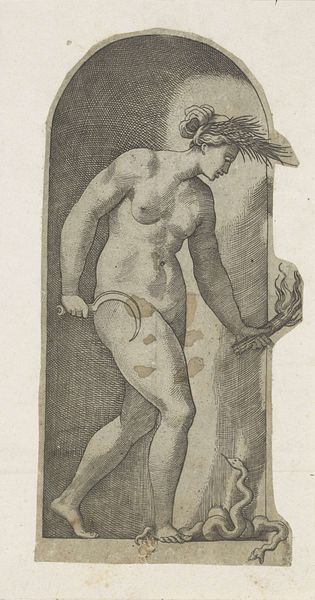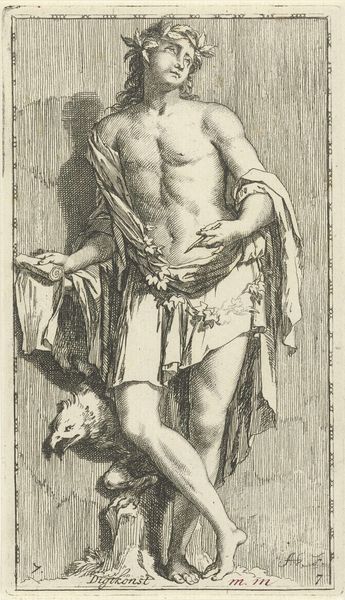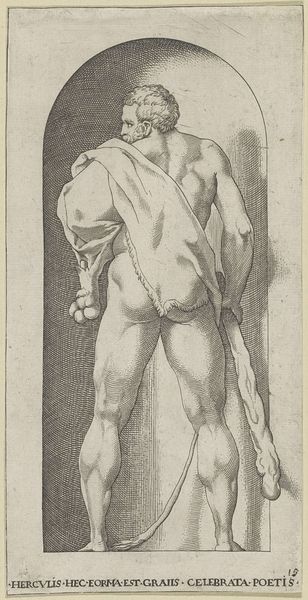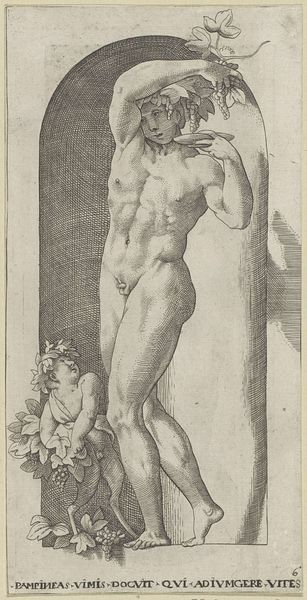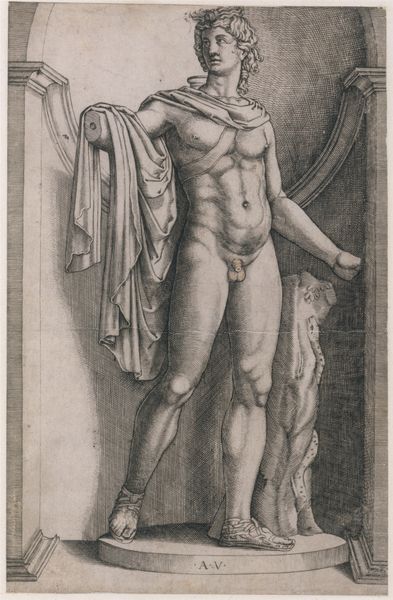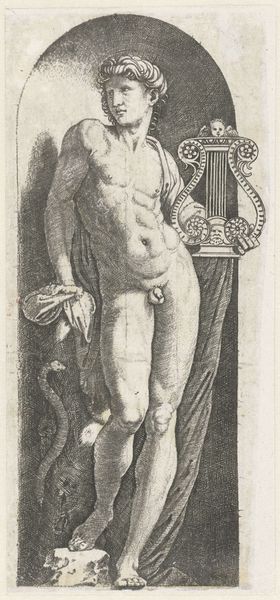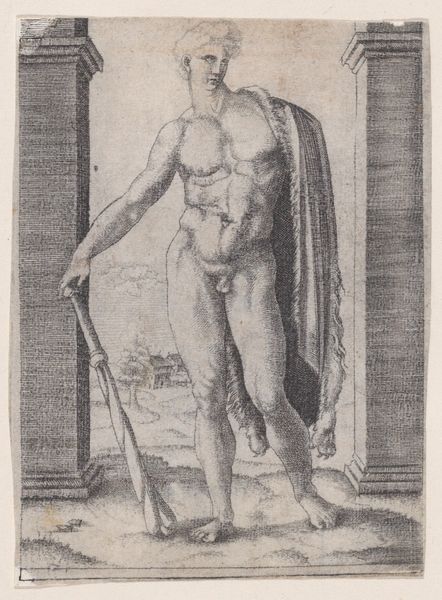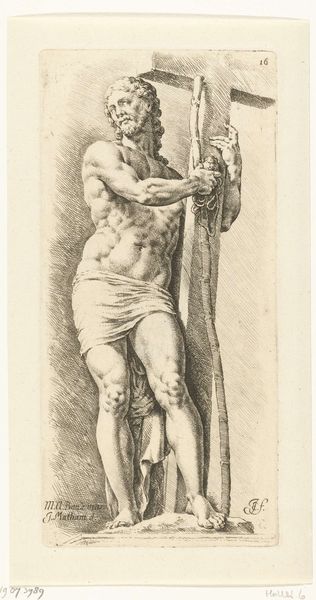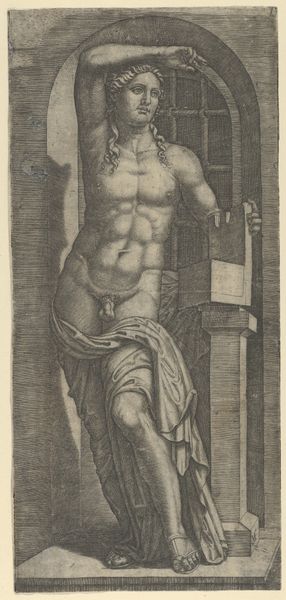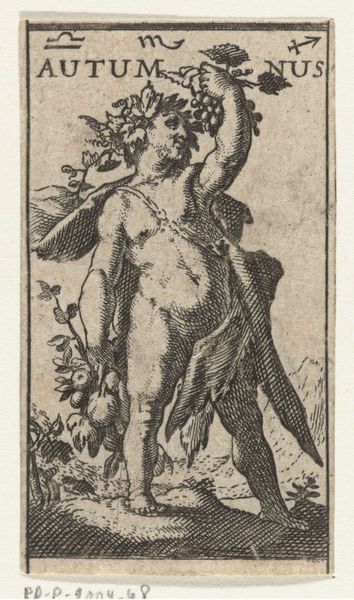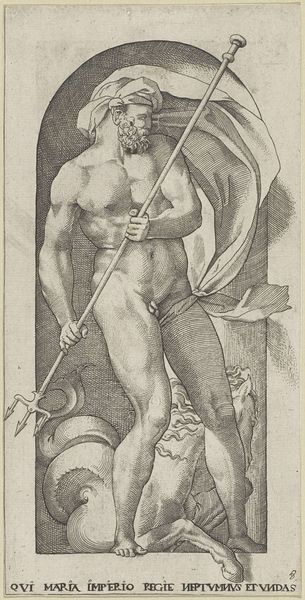
engraving
#
portrait
#
allegory
#
baroque
#
old engraving style
#
caricature
#
portrait drawing
#
academic-art
#
nude
#
engraving
Dimensions: height 210 mm, width 110 mm
Copyright: Rijks Museum: Open Domain
Editor: This is Hendrick Goltzius’s engraving, "Geloof," or Faith, dating back to the late 16th or early 18th century. It’s quite striking with its depiction of a nude female figure. What stands out to you when you look at the process and materials used to create it? Curator: The engraving itself speaks volumes about the printmaking industry of the period. Consider the labor involved in creating such a detailed image. The artisan wasn’t just reproducing an idea, but physically carving it into a metal plate. We need to consider the socio-economic implications here. How did workshops function? Were these individual artists, or more of a factory setting? Editor: That’s fascinating! I hadn’t considered the workshop aspect so much. So the lines that compose the body of the woman signify not only form but the engraver’s craft? Curator: Exactly. The lines, the hatching, the deliberate rendering of light and shadow, all are products of a very physical process, revealing choices in material, the quality of the tools, and how these elements come together to communicate status through access. Also, what implications does making the nude an object of consumption have for society? Editor: It really makes me rethink "old engraving style" as something less about aesthetics and more about a mode of production and circulation of imagery. Curator: Precisely. And don’t forget the societal implications. The image's journey – from the artist's workshop to the collector's cabinet - touches upon class, consumerism, and the very definition of art itself. Understanding these aspects is key. Editor: This makes me see beyond just the visual representation of Faith, and more toward appreciating it as a product of its time and labor!
Comments
No comments
Be the first to comment and join the conversation on the ultimate creative platform.
